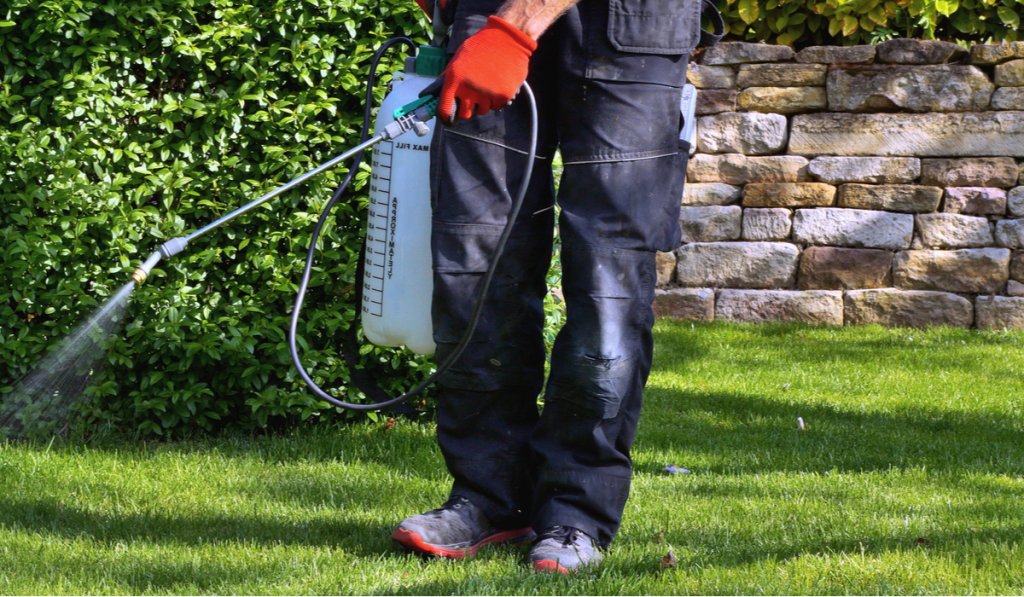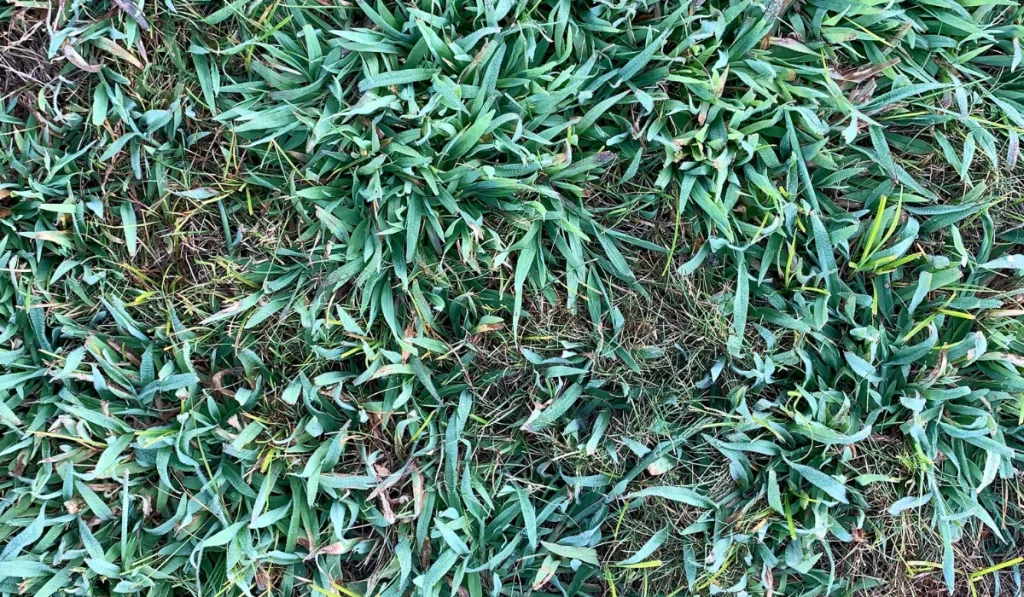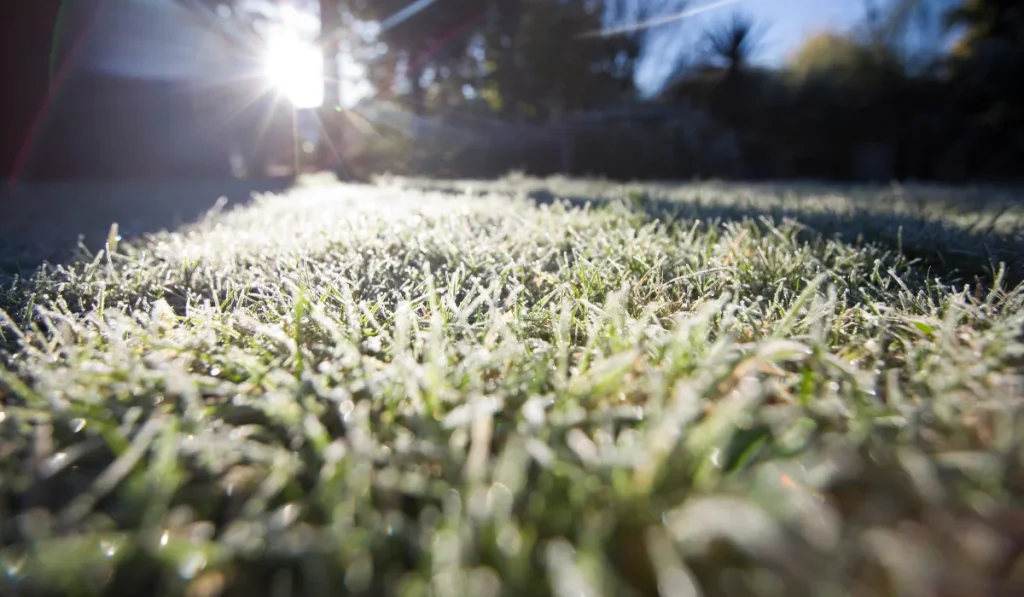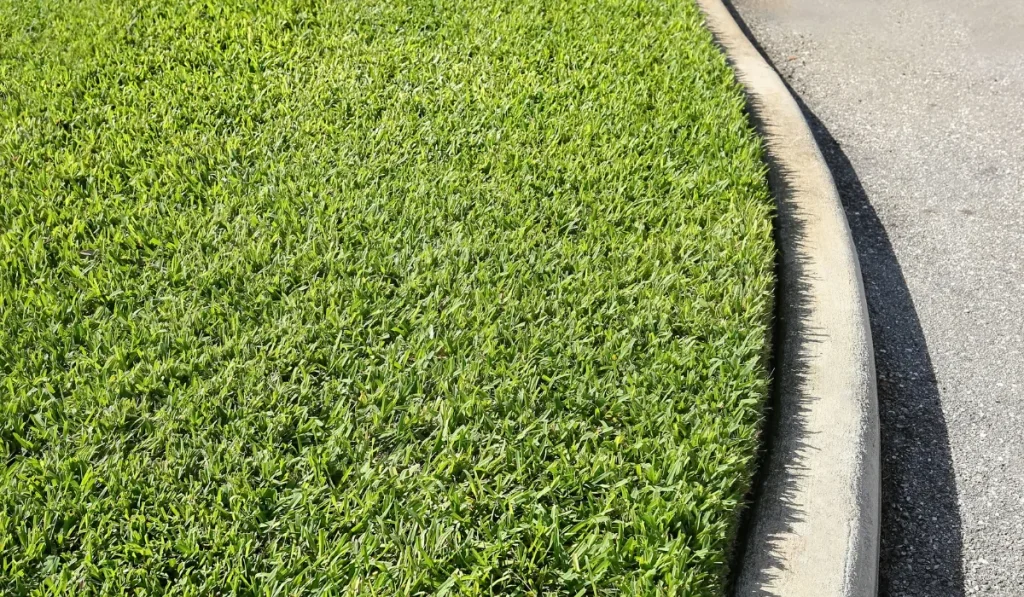A pre-emergent is an herbicide that works to eliminate weeds before they emerge into your lawn. When a pre-emergent is used correctly, they will get rid of weeds before you even see them pop up through your grass.
It is important to remember that you cannot simply rely on only a pre-emergent to control any weed problems you may have. Maintaining your lawn will not only help a pre-emergent to work better, but you will also have to use less of it. Establishing a healthy lawn from the start is the first step.
Before laying your sod, be sure to eliminate any weeds that are in your soil. Starting with a clean lawn will help minimize any weed problems you may have down the road.
Additionally, you will want to keep up on all other lawn care maintenance practices like fertilizing, watering, and keeping your grass at a proper height. All these practices create a strong and healthy turf that is able to combat the weeds that attempt to become established.
Timing is important when applying your pre-emergent. It needs to be applied just before the seeds of the weed germinate, which is usually in the springtime, but the soil can’t be too cold. It is best to test the soil temperature, keeping in mind that most weed seeds don’t germinate until the soil temperature is close to 50 degrees.
It is important to get your pre-emergent down at the right time, before the seed germinates, because of how the pre-emergent works. It works by forming a carpet like barrier under the soil that the weed is unable to penetrate once it has germinated. While it is important to apply pre-emergent before the seed germinates, you actually want the seed to germinate so that it can be exposed to the herbicide and be killed. If it does not germinate it will wait for another chance to germinate when your pre-emergent has worn off. After you apply your pre-emergent, applying the right amount of moisture is crucial. Water is needed to activate the herbicide, but too much water will water down the pre-emergent and it will lose its activity.
When using a pre-emergent year after year, it is important to remember that using one type will not kill all of your weeds. There is not one specific herbicide that will destroy every type of weed and the labels on your pre-emergent will list the weeds it kills.
If you have spent several years using the same pre-emergent, you will most likely have a weed or two that continue to return because your specific herbicide does not contain the chemical needed to kill it. You may want to use a few different pre-emergents in order to solve this problem, but using them at the same time may be too much for your lawn to handle. Additionally, weeds can easily develop a resistance to herbicides, so the same herbicide year after year may eventually prove to be ineffective. To solve these problems, you want to first continue to maintain your healthy lawn (mowing at a proper height, fertilizing, irrigating, etc.), along with changing up the type of herbicide you use. Changing the types of herbicide you use so that you are using different chemicals to combat different weeds is important. Different pre-emergents also work to kill weeds in different ways, such as by interfering with the metabolism of the weed’s cells or inhibiting a weed’s growth by blocking the division of the weed’s cells. So you not only want to pick a new pre-emergent with a different chemical makeup, but you also want to choose one that has a different “mode of action”, or way in which the chemical actually kills the weeds.
Starting with a clean and prepared ground, combined with proper maintenance of your grass and applying the right type of pre-emergent, you will be left with a strong and healthy weed free lawn.



